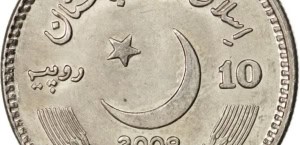LONDON (APP) – Oil prices fell on Wednesday as investors digested the likely impact of increasing Iranian fuel exports at a time of heavy oversupply.
A milestone nuclear deal reached on Tuesday between six world powers and Iran will mean sanctions that have limited sales of Iranian oil for several years are likely to be lifted in early 2016.
Analysts at Goldman Sachs estimate Iran could supply and extra 200,000-400,000 barrels of oil per day (bpd) in 2016 on top of a release of 20-40 million barrels from floating storage, unleashing a ramp-up in supply from a nation that holds some of the world’s largest oil reserves.
Other analysts’ estimates for Iranian exports by early 2016 varied between 300,000 and 700,000 bpd.
“We view the 2016 prospects for higher OPEC production including from Iran as a growing downside risk to our oil price forecast,” analysts at Goldman Sachs said in a note to clients.
Goldman’s current oil price forecast is for Brent to average $58 in 2015 and for $62 next year, while it expects U.S. crude to average $52 and $57 this year and in 2016, respectively.
By 0905 on Wednesday, Brent crude was down 30 cents at $58.21 a barrel. U.S. futures fell 29 cents to $52.75.
Iran, a member of the Organization of the Petroleum Exporting Countries, exported almost 3 million bpd of crude at its peak, before Western sanctions saw shipments collapse to about a million bpd over the last 2-1/2 years.
Traders are also keeping an eye on China for clues to the health of the economy. A savage correction shaved about 30 percent off the country’s stock market in the last month before support steps by Beijing helped stem the free-fall.
China, one of the world’s top energy consumers, reported stable economic growth on Wednesday at an annual rate of 7 percent.
French bank Natixis said there was a risk of oil prices falling more if China’s economy slowed further while global oil production stayed close to its near record highs.
















